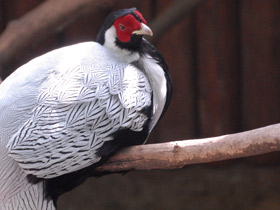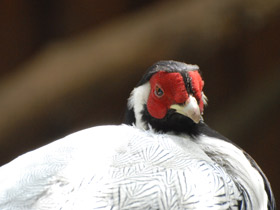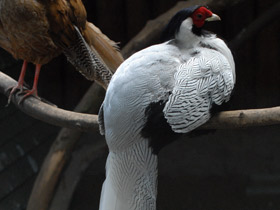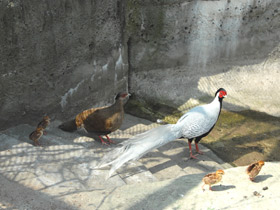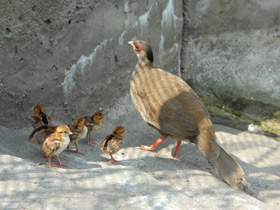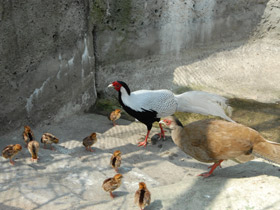The silver pheasant Lophura nycthemera
Silver pheasant видео
The silver pheasant is one of the most famous species of the Luphura genus. This Lophura was named after two goddesses – Nux (goddess of night time) and Hemera (goddess of daytime) – by Carl Linnaeus in 1758, based on the contrast in feather coloration of upper (white) and lower (black) body parts of the males. It is commonly believed that the scientist described this species looking at a real bird, not just a museum specimen, as there are some data confirming that silver pheasants were brought to Europe already in the 18th century. Undoubtedly, the bird was also popular in China, for images of silver pheasants are preserved on many old silk paintings and embroideries, and they were mentioned in ancient poems dating back as far as 5 thousand years.
The range of the silver pheasants includes the territories of south-western China, eastern Burma, southern Vietnam, south-western Cambodia, south-eastern Thailand, Laos and Hainan Island. In China they inhabit mountain forests, bamboo groves, thick bushes and ferneries located 1,500 to 1,800 m above sea level; in Vietnam they are usually found in rainforests (more than 900 m above sea level), as well as in evergreen deciduous and pine forests (more than 1,200 m above sea level).
The male silver pheasant has long black crest, and black chin and throat; his belly is glossy bluish-black. The rest of the body is white or grey (depending on the subspecies), with thin black streaks. Most characteristic of this species is bright red facemask with wattles, which the males use for courtship displays. Female silver pheasants are dull birds with olive-brown plumage. They are usually smaller than males and have paler featherless facial skin. The male body length in large subspecies of the silver pheasant comprises up to 120–125 cm, of which 75 cm is accounted for by the tail; the weight is 1.13 to 2 kg. The females have far smaller sizes, with body length ranging from 55 to 90 cm, tail length, from 24 to 32 cm and weight, from 1 to 1.3 kg.
The silver pheasants feed on fruit, berries, seeds, flower petals, buds, leaves, bulbs, tubers, as well as various insects, worms, molluscs, and small reptiles. The hatchlings eat various invertebrates, and then start feeding on fresh greens, eventually adopting adult diet.
Typical male courtship displays include feather fluffing, crest spreading, and wattle inflation. The clutch size ranges from 6 to 15 eggs (10-18 eggs, according to other sources), with incubation period comprising 26–27 days. The male participates in brood rearing and is able to take charge of it alone, if the female is absent. The chicks develop fast, acquiring the ability to fly already a couple of weeks after the hatching.

















